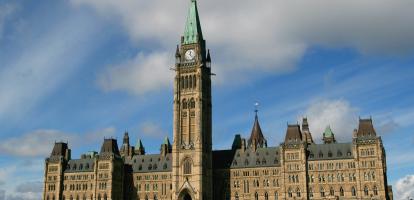If the city approves the plan and gets the design of the toll right, it will mean lower property taxes and reduced traffic congestion.
Putting a toll on Toronto’s expressways may be the biggest policy idea of the year – perhaps the decade – in Toronto. If the city approves the plan and gets the design of the toll right, it will mean lower property taxes and reduced traffic congestion.
Mayor John Tory announced on Thursday he will support the introduction of tolls on the Gardiner Expressway and Don Valley Parkway, the two major expressways into the downtown core. It is now up to City Council to decide whether to support him. Here is why they should.
The toll will not be double taxation. Far from it. Gas taxes, vehicle licences and other revenues from drivers have covered less than 70 per cent of roadway expenses across Canada since 2008. Residents pay the rest of the expense with higher property and other taxes. A road toll should mean otherwise lower taxes to finance roads.
The most important reason why road pricing is a good idea is that it can reduce congestion. The time that you spend sitting in traffic has an economic and social cost. It means you can’t be at work, at home with your family or enjoying a new restaurant. Traffic hurts people not even stuck in traffic. You being stuck in traffic means your office is less productive, household chores are left to others and the restaurant you planned to go to has one less customer helping pay the wages of staff.
A well-designed road toll would mean drivers who would otherwise drive at rush hour decide to travel at another time or by other means. That takes cars off the road and reduces congestion.
Faster moving traffic will help everyone. Passengers on buses, who tend to have low incomes, will now have a faster trip downtown. Faster moving traffic also increases the overall capacity of the highway. That’s right, tolls can mean more people would have access to the highway. How? Traffic is kind of like a Three Stooges sketch in which all three of them try to get through a door at the same time. Nobody gets through if everyone goes at the same time. A toll that varies with demand to maximize throughput will make sure that fewer people are clogging up the entrances to expressways and slowing everyone else down.
The plan will move first to Mr. Tory’s executive committee on Dec. 1, then to a full vote by Council on Dec. 13. The debate should now be about getting tolling right.
First, the city needs to get the design right. Tollbooths are a relic of the past. The city should opt for electronic tolling using a transponder, supported with licence-plate photos at freeway entrances and exits.
Second, the city needs to get the price right. The early plan is the toll will be a flat fee of about $2 for drivers that get on these expressways. A flat fee would be a mistake, however. The toll will only reduce congestion if it varies based on traffic demand. The toll should also reflect how far people drive. If the amount of the toll does not reflect demand, it is only a tax grab.
Third, the city must be careful about what it says the revenues are for. The mayor is pairing the discussion of the need for road tolls with the need to balance the upcoming budget. However, the city will not start collecting tolls for many years. In the meantime, in addition to increasing the Municipal Land Transfer Tax, city staff recommended re-introducing the vehicle registration tax, which the city could start collecting in early 2017. Once the city starts collecting the tolls, it should plan to roll back economically harmful taxes such as the vehicle registration and Land Transfer Tax.
Council will now turn to debating the mayor’s plan to put tolls on expressways and raising other taxes. It should keep in mind how a well-designed road toll makes the city better off while also raising revenues.





